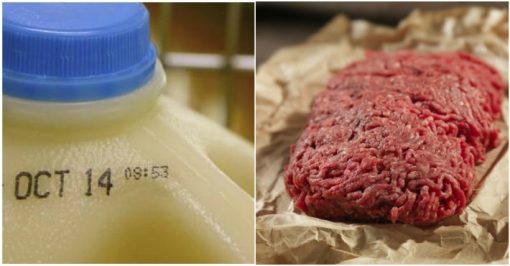We’ve all been there.
You’re in the grocery store, where you see bacon, your favorite cheese or yogurt, and since you love it so much, you decide to buy more than you usually would. Unfortunately, life has a habit of ruining even the best laid of plans, and by the time you head to your fridge for some well-earned indulgence, you’ll notice that the sell-by date was two or three days ago.
If you’re anything like me, you’ll throw it all away immediately, taking no risks with the various sufferings of food poisoning. But what if we’ve been sold an elaborate lie, and you can actually eat foods that are past their sell-by date? There’s a lot to take into account when knowing when your food could spoil, but here are a few general rules for your favorites, and how long they’ll survive beyond the date on the packaging.

1. Dairy – one to two weeks
Of all the foods, dairy is the food type you are least likely to mess around with on the expiration date. But generally, most dairy is safe to eat as much as a fortnight after it’s supposedly expired. Keeping your milk close to 34°F can help you get as much as an extra week out of your milk, and in general, go with your own discretion when deciding to eat that dairy. For soft cheeses, only toss if you notice mold in there somewhere, while for harder cheeses, you can just cut that mold off and carry on grating as if nothing happened.
2. Eggs – two weeks
Generally, two weeks after they ostensibly expire, your eggs are good, but just to be sure, place your egg in a glass of water. If it floats, you’ve got a rotten egg, but if it sinks to the bottom, then you should be good for that omelette.
3. Cereal and grains – one year
When it comes to unopened processed foods like that box of Corn Flakes or that bag of potato chips, you usually gobble them down long before the expiration date. But if you don’t, that’s no problem: they’re still good for as long as 12 months afterwards. If you’ve got stale cereal on your hands, there are still plenty of things it can be used for, like making breadcrumbs or putting together a delicious pie crust.
4. Greens – take it by leaf
With fresh greens like spinach, lettuce or kale, the rules aren’t as hard or fast as some of the things we’ve explored already on this list. Salad greens in particular are notoriously good at picking up pockets of moisture – hotbeds for bacteria, and suspect numero uno for any unexpected cases of food poisoning. Carefully check each leaf individually, and if there are any slimy greens (even if it’s before the expiration date), then get rid of them right away.
5. Meat – unless you’re sure, don’t risk it
Now, so far in this article, there’s an element of improvisation when deciding whether or not to eat something with an expiration date in the past. I’m always looking out for your health, and as a result, I’d like to urge you to err on the side of caution when looking at meat. Thankfully, the USDA has a set of guidelines for judging meat, and there are two things to look out for expired meat: changes in color, as well as a “slimy or tacky” feel. Not sure about whether the meat is still okay? Toss it in the garbage.


